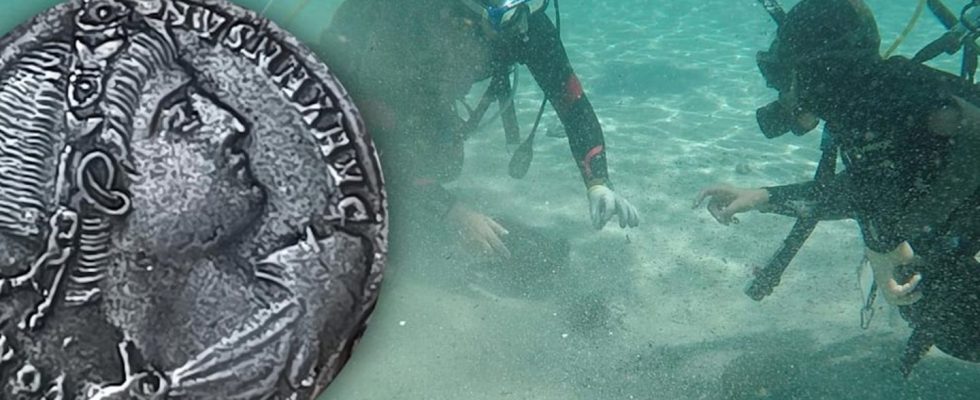50,000 bronze coins from ancient times
Huge treasure discovered on the seabed off Sardinia
A huge coin discovery on the seabed off Sardinia is said to be one of the most important discoveries in recent years.
In the waters off the northeastern coast of Sardinia, in the area of Arzachena, a rich deposit of Follis coins, which are Roman coins from ancient times, was discovered. The coins date from the first half of the 4th century AD, like that Italian Ministry of Culture reported.
According to initial estimates, based on the total weight of the find, the number of large bronze coins is around 30,000 to 50,000 examples. This is significantly more than the 22,888 follis discovered in Seaton in the UK in 2013. In addition to these coins, the remains of amphorae from African and, to a lesser extent, from Oriental production were also found.
Discovered on a private dive
The discovery was made by a private citizen who, while diving, noticed metallic remains at a shallow depth, not far from the coast. The next day, underwater archaeologists carried out initial exploration in the affected part of the sea, in collaboration with the divers of the Carabinieri in Cagliari and the fire department in Sassari, as well as the police, the Guardia di Finanza and the port captains.
The dives revealed the presence of two major distribution areas for the Follis in a large sandy area between the beach and the seagrass meadow: the latter, due to its location and the morphology of the seabed, could contain significant remains of a shipwreck.
Coins are in very good condition
All recovered coins are in an exceptional and very well preserved condition. Only 4 pieces are damaged, but still readable. The chronology of the coins covers a period from 324 (coined by Licinius) to 340 AD. This was confirmed by the presence of coins of Constantine the Great and other members of his family as Caesars, but especially by the absence of Centenionales , which were minted from 346 AD. The group of recovered follis comes from almost all the mints of the empire at the time, with the exception of Antioch, Alexandria and Carthage.
The coin discovery is one of the most significant discoveries of numismatic artifacts in recent years and once again demonstrates the richness and importance of the archaeological heritage preserved in the depths of the seas.

